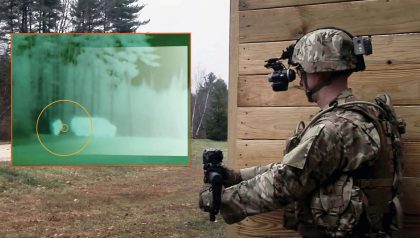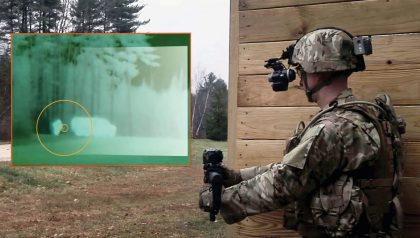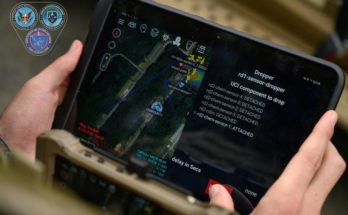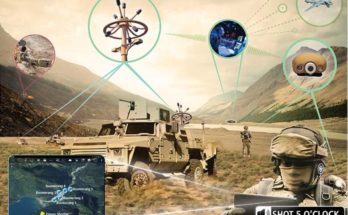From Breaking Defense (ATAK Ref in last paragraph). It would be great if TAK integrated with IVAS:
The artificially intelligent target detection will be part of the Integrated Vision Augmentation System (IVAS), for which Microsoft’s HoloLens won a two-year, $480 million contract earlier this week. I’ve written extensively about IVAS’s other features back when it was still called HUD 3.0. It’s essentially an infantryman’s version of a fighter pilot’s Heads-Up Display, combining advanced night vision with augmented reality technology (much like Google Glass) to superimpose a targeting cross-hairs — wirelessly linked to the soldier’s weapon to show exactly where it’ll shoot — and tactical data over the wearer’s field of vision. Other aspects will monitor the medical condition of the soldier and record such things as blast overpressure from roadside bomb blasts to assist medical treatment.

The artificially intelligent target detection will be part of the Integrated Vision Augmentation System (IVAS), for which Microsoft’s HoloLens won a two-year, $480 million contract earlier this week. I’ve written extensively about IVAS’s other features back when it was still called HUD 3.0. It’s essentially an infantryman’s version of a fighter pilot’s Heads-Up Display, combining advanced night vision with augmented reality technology (much like Google Glass) to superimpose a targeting cross-hairs — wirelessly linked to the soldier’s weapon to show exactly where it’ll shoot — and tactical data over the wearer’s field of vision. Other aspects will monitor the medical condition of the soldier and record such things as blast overpressure from roadside bomb blasts to assist medical treatment.
The artificially intelligent target detection will be part of the Integrated Vision Augmentation System (IVAS), for which Microsoft’s HoloLens won a two-year, $480 million contract earlier this week. I’ve written extensively about IVAS’s other features back when it was still called HUD 3.0. It’s essentially an infantryman’s version of a fighter pilot’s Heads-Up Display, combining advanced night vision with augmented reality technology (much like Google Glass) to superimpose a targeting cross-hairs — wirelessly linked to the soldier’s weapon to show exactly where it’ll shoot — and tactical data over the wearer’s field of vision. Other aspects will monitor the medical condition of the soldier and record such things as blast overpressure from roadside bomb blasts to assist medical treatment.
But this is the first I’ve heard about the image-recognition feature. Brig. Gen. Chris Donahue — until recently director of the Army’s infantry modernization team — mentioned it in a discussion of IVAS features he said “we’re already prototyping.” It’s not clear whether it’ll be an integral part of IVAS or an add-on, though he did say “it’s on the body,” which implies there’s either some kind of body camera or a supplemental processor not built into the goggles themselves.
…
This may sound awfully distracting, but it’s a lot better than soldiers having to take their eyes off the battle to look down at a modified smartphone for tactical updates, as with the current Nett Warrior system running the Android Tactical Assault Kit (ATAK) app. Years of “attention management” research on aircraft pilots show that people in combat hyperfocus on the threat in front of them and stop checking instrument displays — which is what you want them to do, rather than wander into combat staring down at a screen like an iPhone addict about to walk into an open manhole.




